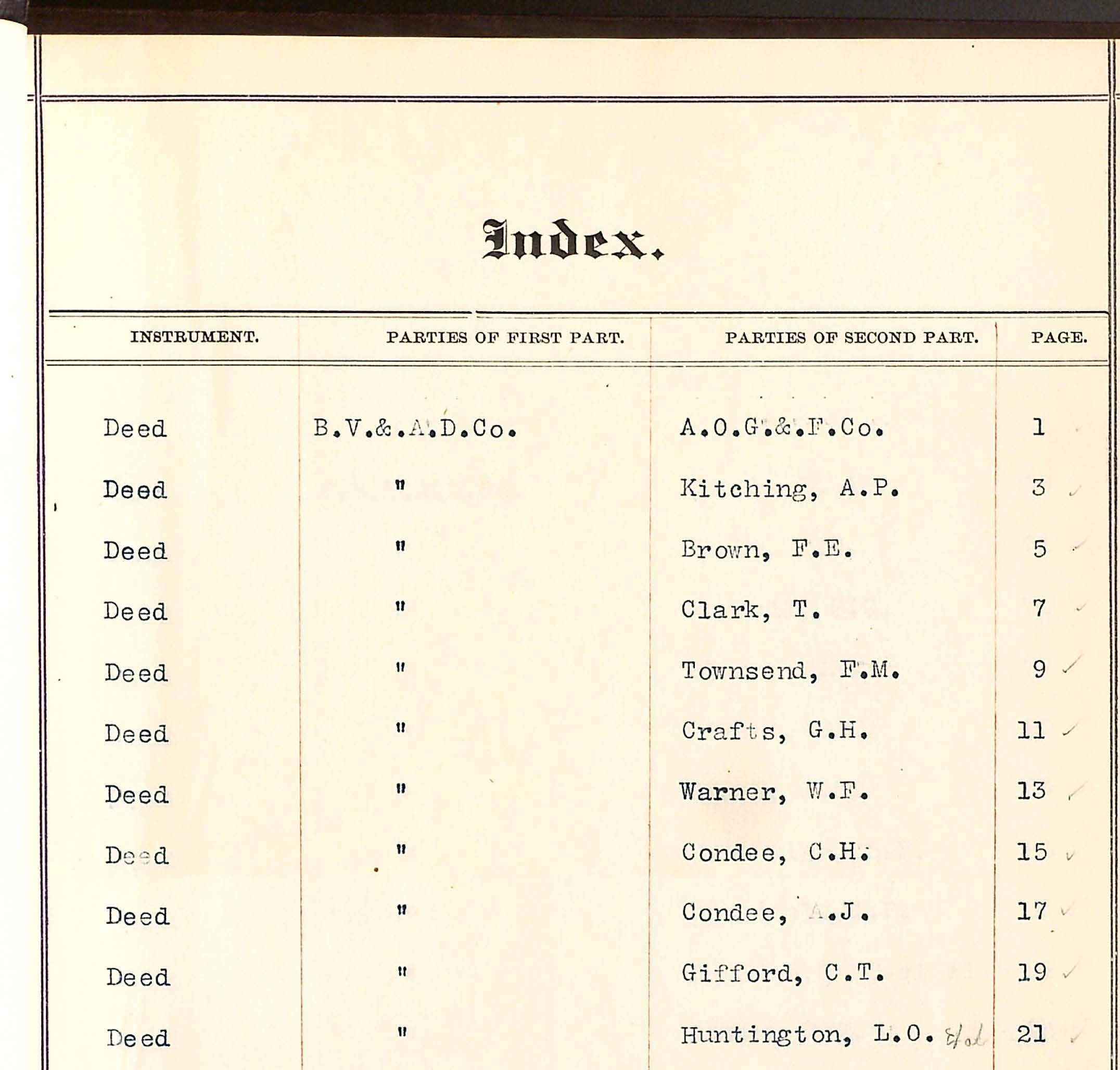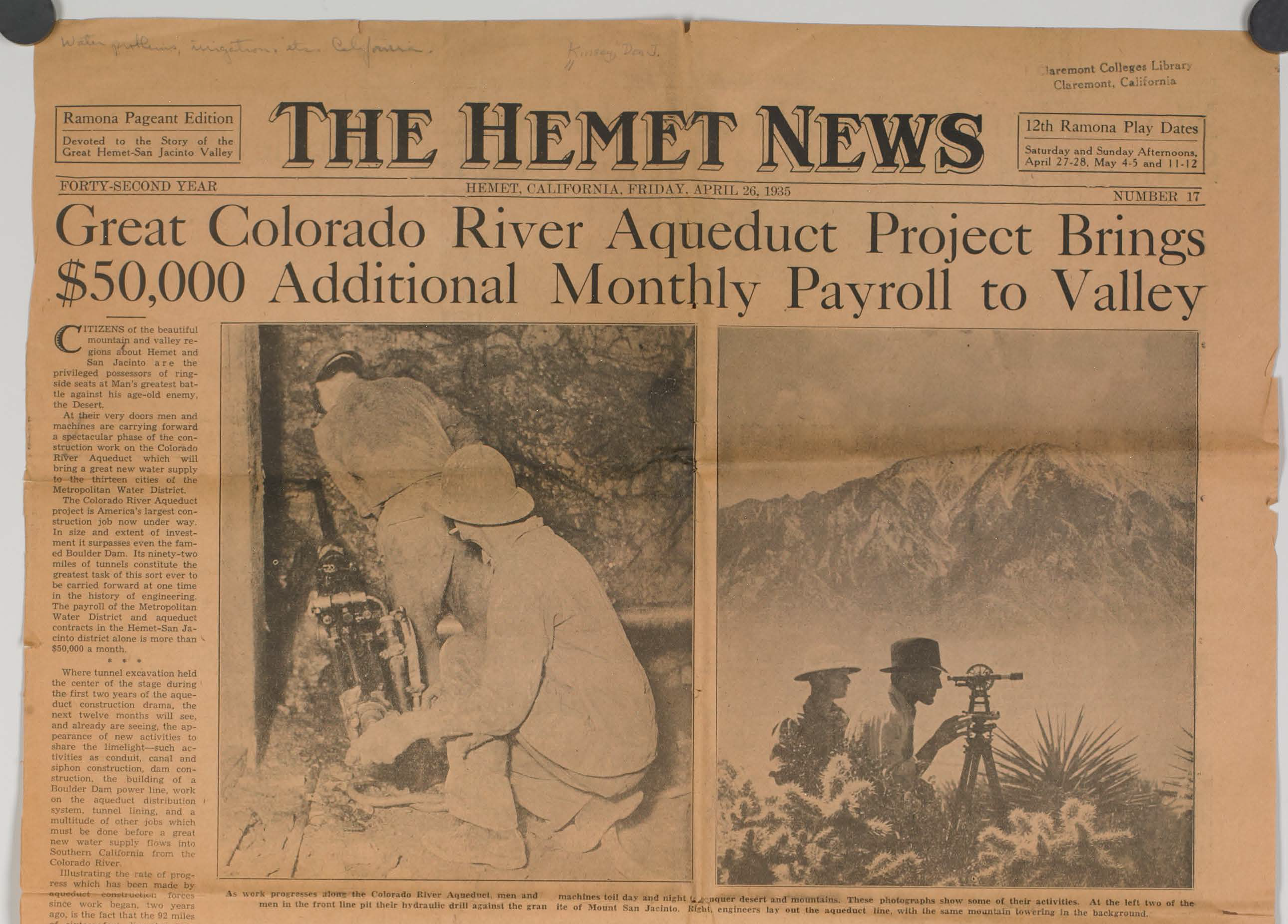Hello readers! This will be my last blog post as today marks my last day as a CLIR CCEPS fellow. This experience has taught me skills I didn’t have before – now I consider myself an experienced scanner, photographer, and metadata creator. This fellowship also made me realize the amount of work that goes into archiving materials that scholars can easily access on a computer, something I very much took for granted before the fellowship. Lastly, I’ve thought a lot about water during the past two months, as a result of working with documents saturated with discussions about it. I can’t help but think about how pertinent something like access to water is in our current climate, one in which leaders openly deny global warming and the reality that human actions have the capacity to damage the environment in real and catastrophic ways. I can go to the water fountain that is twenty feet away from me and get cold, clean water on a hot day, and I can do this because of the foresight of individuals who came long before me. Without this foresight, and what to me is at its core compassion for human and non-human life, disaster will ensue, and this is both irresponsible and cruel. Thank you to everyone for a great experience, and for the care you put into your work!
More Metadata and a Watery Trip to LA
Hello readers! This week I’ve worked on collecting
more metadata, and I have unfortunately run out of meta jokes. Dry your tears
however, because next week the CCEPS fellows may be going on a field trip! We might be visiting the Metropolitan Water District in LA and getting a tour of the
exhibits at the district, including “Turning on the Tap: 75 Years of Water
Delivery to Southern California,” and “From the Archives Reaching for Water –
Rex Brandt and Metropolitan.” We may also learn more about a recent
Twitter campaign carried out by MWD about the stories of individuals who were
involved in the Colorado River Aqueduct. I’m looking forward to hearing about
things that I’ve spent the last two months reading pieces of, and getting a
better idea of how Southern California’s water history is shaping its current and
future access to water. Stay dry out there – there are light showers this week, and the water is coming for you.
Puppets and Growling
Hello! This week I’ve been busy collecting more metadata, and I’ve come across some very interesting lines in the documents I’ve been looking at. Both letters are from C.N. Perry to H.T. Cory, and Perry has quite the flair for poetic language and a dry wit (pun very much intended). In the first letter Perry tells Cory how he was unaware of the business dealings in the Los Angeles office, and how Cory’s letter made him aware of the “whole scheme.” Perry clarifies that he doesn’t mean the “actual dirt moving and structure building,” which he has a “vivid recollection” of, but another kind of dirt about the “inside workings” in Los Angeles which altered what was happening on the ground. In a moment of admirable symbolism production, Perry says that “the real strings, which, when pulled, made us puppets dance.” Poetic, deep, and just a little angry at the business institutions which have so much control over projects on the ground. Perry’s anger is once again expressed, when he ends his next letter to Cory with the statement “I will refrain from indulging my propensity for growling,” though the growling is not directed at Cory but at the lack of attention he feels is being expressed about conditions at the Alamo Channel. Be free, Perry, and growl away.
That’s So Meta
Congratulations on reaching Thursday readers! This week I learned how to collect metadata. “That’s so meta,” you may be murmuring, and you would be correct. Metadata is data on data – how’s that for being meta? Metadata is important because it gives us information about the data that makes the documents we’ve digitized more accessible and easier for researchers to sort through. To collect metadata, we look at each document and record certain pieces of information about it, including its title, a brief description of its content, its contributors, recipients, the language it is in, and the dates referenced in the document. We also include the subject for each document, words that capture what the document describes and includes, like “dams” or “floods.” This way researchers who are interested in floods, for example, will have a much easier time finding the document than if it didn’t include that subject. Since I started the process this week I still have a long way to go before getting through all the documents, but it will happen, drop by drop, trickle by trickle.
Adventures in Book Scanning
Happy Friday! This week I learned how to use a new piece of equipment – the book scanner. The reason we had to use the book scanner was that one of the documents had pages that were bound to each other with a string of sorts, and may also have been glued together, and taking the pages apart might have damaged them. This is where the book scanner comes in – the magical device scans books from above, so unlike a regular scanner, the pages don’t have to be pressed between the device to be scanned. The book can be laid out normally, as if it’s being read, and the scanner basically takes a picture of it from the top that’s then transferred to the computer. I was surprised at how mostly simple it is to use, and even more surprised that using it seems to be faster than using the regular scanner. The only step that’s been harder than the regular scanner so far has been having to redraw the cropping window for each page, but that’s pretty minor. Look how good of a job it does! Happy weekend, and as always, drink your water.

Camera Matters
Hello! This week I accomplished a very impressive task – I successfully took photos of documents, and I am now a budding photographer. Typically photos are taken when documents are too large to be scanned, and this week a folder of newspaper articles and a few maps fell into that category. The first step of taking these photos is going to the camera room, a room on the first floor of the library with all the equipment we need – lights, a tripod, a whiteboard, a computer, and for good measure, the camera. The first decision that needs to be made after going into the room is how the item should be photographed, specifically whether it should be attached to the whiteboard with magnets and then be taken photos of, or whether it must be laid out on a flat surface with the camera lowered or raised depending on the size of the picture. Items that are more fragile are usually laid out, while those that can be hung without being damaged are usually photographed on the whiteboard. Then the distance between the camera is adjusted so the item is captured in its entirety, and the camera itself adjusted to make sure that the item is clear. Once a photo is taken, a software on the computer lets us see what it looks like. We usually zoom into the photo at 100 and 200%, and adjust the lens again if writing can’t be seen clearly at those zoom in percentages. The image is then cropped and rotated if necessary in Photoshop, where its color may also be adjusted to more clearly reflect the actual item. It’s a long process, but the end results speak for themselves. Until next time readers, and remain hydrated!

A Watery Feud
Greetings! As I was scanning documents this week, I came across a particularly amusing newspaper clipping about a report done by C.N. Perry on the practicability of plans to build light and power plants in the Imperial Valley. Perry is a name I’ve come across quite often the past few weeks. There are letters to him, letters from him, and he seems to have played a large and active role in California’s water history as an engineer and general manager of the Imperial Irrigation District. This particular newspaper article was about a report Perry had done about the feasibility and effectiveness of Earl S. Casey’s plans to build these plants and provide the people of the valley with light and power. Casey, it seems, did not take the report well, and in turn wrote a newspaper article that contains brilliant instances of snark towards Perry. Casey, in the article, asks Perry who the report is addressed to, who paid for it, and questions the accuracy of his tables.
This is passive aggressive communication through newspaper articles, and it is brilliant. In another jewel, Casey tells Perry that he will “enlighten” him regarding his report. Yet my favorite line in the article is this – after asserting that Perry’s report was unnecessary because he has complied with the conditions set forth by the Water Commission, Casey says “So you see Mr. Perry your report is of no value.” Water history drips with scandal, and I for one cannot wait to discover more of it.
An Evil Beauty: Flower Staples
Hello! My name is Elika and I graduated from Pomona in May. I started working on the project last week, and this is my first blog post! So far I’ve done a lot of taking staples out of documents to scan them, and then subsequently scanning them, which brings me to what I’m going to talk about today: flower-shaped staples.
In order to scan the documents, the flower staples have to be taken out. The only problem is that they’re very unwilling to move, and prying them off of the documents takes a bit of effort. I’ve found the best way of doing this is flipping the document over so the petals are visible. Then I approach each petal with a slightly frightening level of determination, and slide the staple remover under it to make the petals fold over. After all the petals have been folded, the flower is now a crumpled circle, and can be pushed through the other side. Voila. I haven’t been able to find any history about these staples, but it does seem that they were used many decades ago, according to the vintage scrap booking blogs I visited. Enjoy!